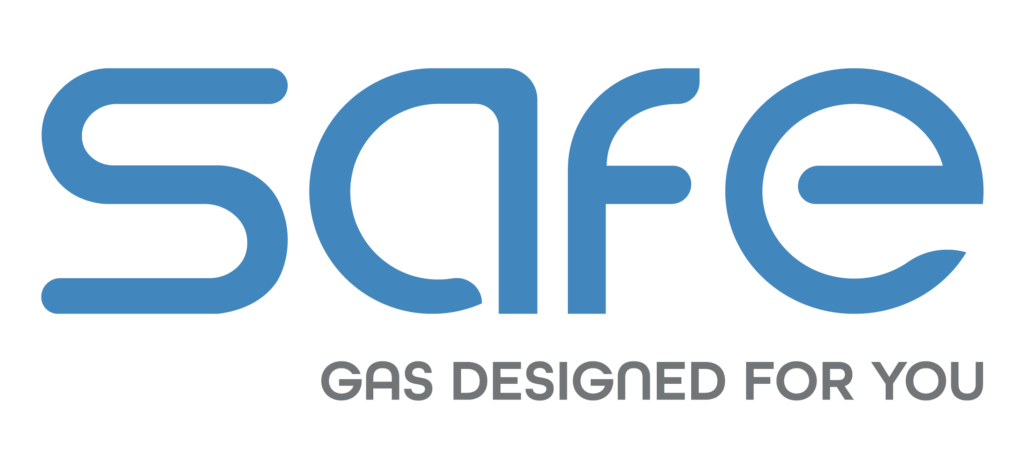Hydrogen project at the heart of SAFE&CEC thinking
Hydrogen properties
Hydrogen is the first element in the periodic table and is present in approximately 75% of matter in combined form: in particular, in water (H2O) and organic compounds such as natural gas (CH4). Let’s take a closer look at the characteristics of this precious gas. Hydrogen, whose bioatomic molecule is H2, is colourless, odourless, tasteless and completely non-toxic. Although it is a very light gas (14 times less than air), it has a very high energy density. In fact, 1 kg of hydrogen contains the same energy as 2.1 kg of natural gas and 2.8 kg of oil.
Hydrogen as an energy source
La produzione di idrogeno come fonte enThe production of hydrogen as an energy source can take place in different ways, through chemical processes that in turn require energy input.
This energy used to produce hydrogen can come from different sources, more or less ‘clean’, from which we can classify the hydrogen obtained in:
Green, zero-emission hydrogen can be obtained from renewable energy sources, primarily solar and wind power, which have zero greenhouse gas emissions. It is obtained through the process of electrolysis with no emissions, primarily of carbon dioxide, the main culprit in the widening of the ozone hole and the rise in global temperature.
- Grey and turquoise hydrogen are produced from natural gas (CH4).
- Grey hydrogen is obtained by the steam reforming reaction, also known as steam reforming.
- Turquoise hydrogen is obtained through the process of pyrolysis, a treatment in the absence of oxygen.
- Blue hydrogen is commonly produced from biomethane obtained from biomass through the process of anaerobic digestion and, subsequently, the upgrading system that purifies the biogas into biomethane using membranes. Biomethane is broken down into hydrogen and carbon dioxide using the steam reforming process. The resulting hydrogen has low greenhouse gas emissions because the carbon dioxide is captured and stored.
- Purple hydrogen is commonly produced by electrolysis from nuclear power plants with low CO2 emissions produced. Last year, the issue of potential hydrogen production from nuclear power was at the centre of the debate in Europe: Paula Abreu Marques (head of the renewable energy and CCS Policy Unit at the European Commission’s Energy Directorate) argued that <<Electrolysis can be powered by renewable electricity if you have electrolysers connected to nuclear power plants and this will be classified as low-carbon hydrogen>>.
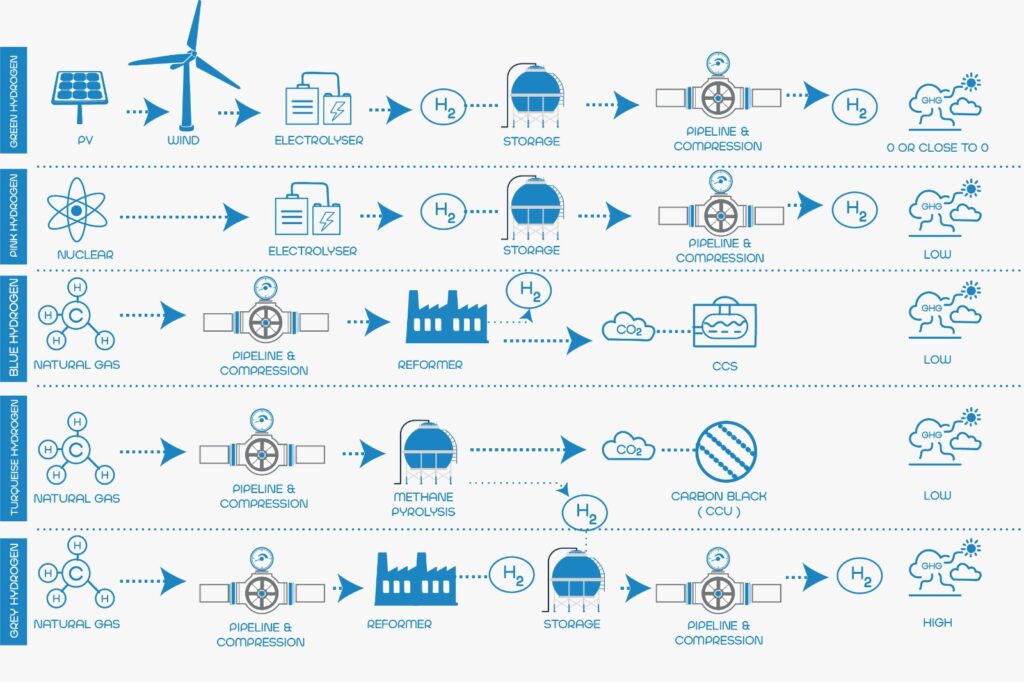
This diagram illustrates how the different types of hydrogen obtained can be stored or compressed in the distribution network for use as an energy source in the industrial, automotive and private sectors.
Green hydrogen, the game changer
To date, green hydrogen production is worth about 5% of all hydrogen production. It is estimated that as the cost of solar and wind power and the cost of electrolysers decrease, green hydrogen production could become a real game changer for the energy transition.
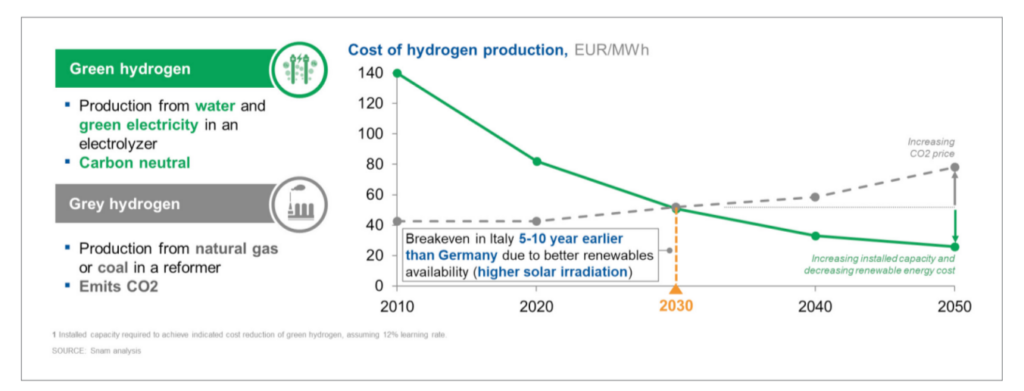
The distribution network, investments and projects in the short and medium term in infrastructure to ensure hydrogen distribution: the Italian example of SRG
Snam’s strategic plan envisages investing approximately 23 billion euros over the next 10 years in 3 areas:
- Distribution. An initial test campaign, aimed at assessing the possible concentration of hydrogen in the current network, has established that about 70% of the current pipelines are capable of transporting up to 100% hydrogen. Therefore, with a view to H2 Ready, the project to modernise the network of the remaining 30% will be continued in Italy. In addition, a “Multi-Commodity” distribution network will be developed which will allow the transport of natural gas, biomethane, carbon dioxide (where necessary) and hydrogen. In addition to the project for the gradual reconversion of approximately 2,700 km of the existing network, new distribution lines will be built throughout the territory, which will be upgraded to allow the transport of hydrogen, which is a very light gas compared to natural gas and biomethane.
- The storage of biomethane, natural gas, hydrogen and carbon dioxide.
- New “Green Deals” dedicated to the implementation of innovative projects for the use of biomethane and hydrogen.
SAFE&CEC concrete contribution to energy transition
Innovation comes in the form of the new Hy-HC, a new hydraulic compressor capable of compressing 100% hydrogen, the result of synergy and cooperation between SAFE&CEC: SAFE and Clean Energy Compression (CEC).
It is increasingly necessary to support and accelerate the transition process towards the use of hydrogen as a clean energy source and its distribution in the transport, industrial and private markets. For this reason, SAFE&CEC is committed on one hand to testing the current products to ensure that they work properly with gases with a 20% hydrogen concentration and, on the other hand, to expanding the product portfolio with the launch of the new Hy-HC hydraulic compressor, capable of compressing 100% hydrogen together with the development of the new dispenser.
Features of the new Hy-HC hydraulic compressor:
- Green solution though by oil-free technology
- Long slow stroke and small clearance volume in the compressor result in high volumetric efficiency
- Designed and engineered for easy maintenance: pistons in each cylinder allow for quick removal during maintenance activities by removing the head
- With high availability and reliability: gas cylinders are sleeved for liquid cooling to maintain temperature and improve component lifetime.
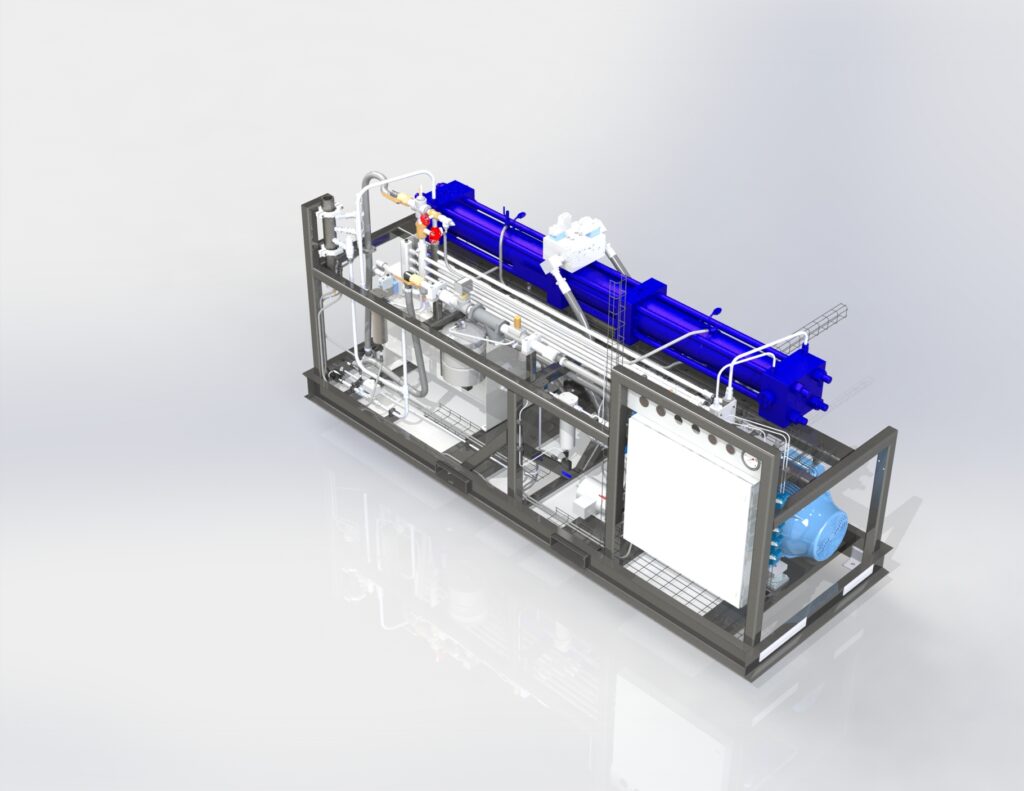
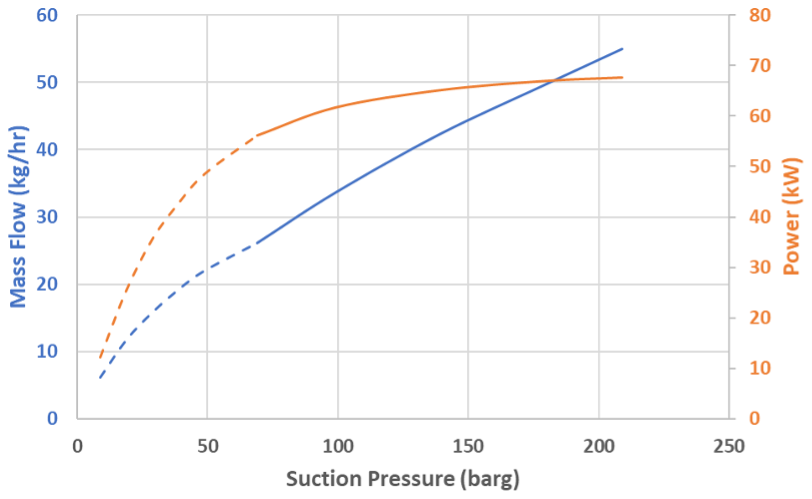
| Suction pressure | BarG / psig | 9÷209 / 130÷3,030 |
| Discharge pressure | BarG / psig | 950 / 15,000 |
| Flowrate | Sm3-h / SCFM | 723 / 425 |
| Power | kW / Hp | 75 / 100 |
SAFE&CEC commitment
It is in SAFE&CEC DNA to implement new technologies for the energy transition, according to a far-sighted vision that has always allowed the Bolognese company to be ahead of its time. In this perspective, SAFE&CEC is preparing to launch on the market technologies related to hydrogen, the game-changer gas of our time. The aim is to develop solutions suited to the complex management of this gas, useful in all markets and in everyday life, from the automotive sector to grid injection. Now, more than ever, SAFE&CEC is called to a crucial test to prove that the levers of its growth have always been the search for innovation, product quality and attention to the environment. At stake is an energy revolution, leading to the achievement of value not only for Customers and Business Partners, but for the whole planet.
